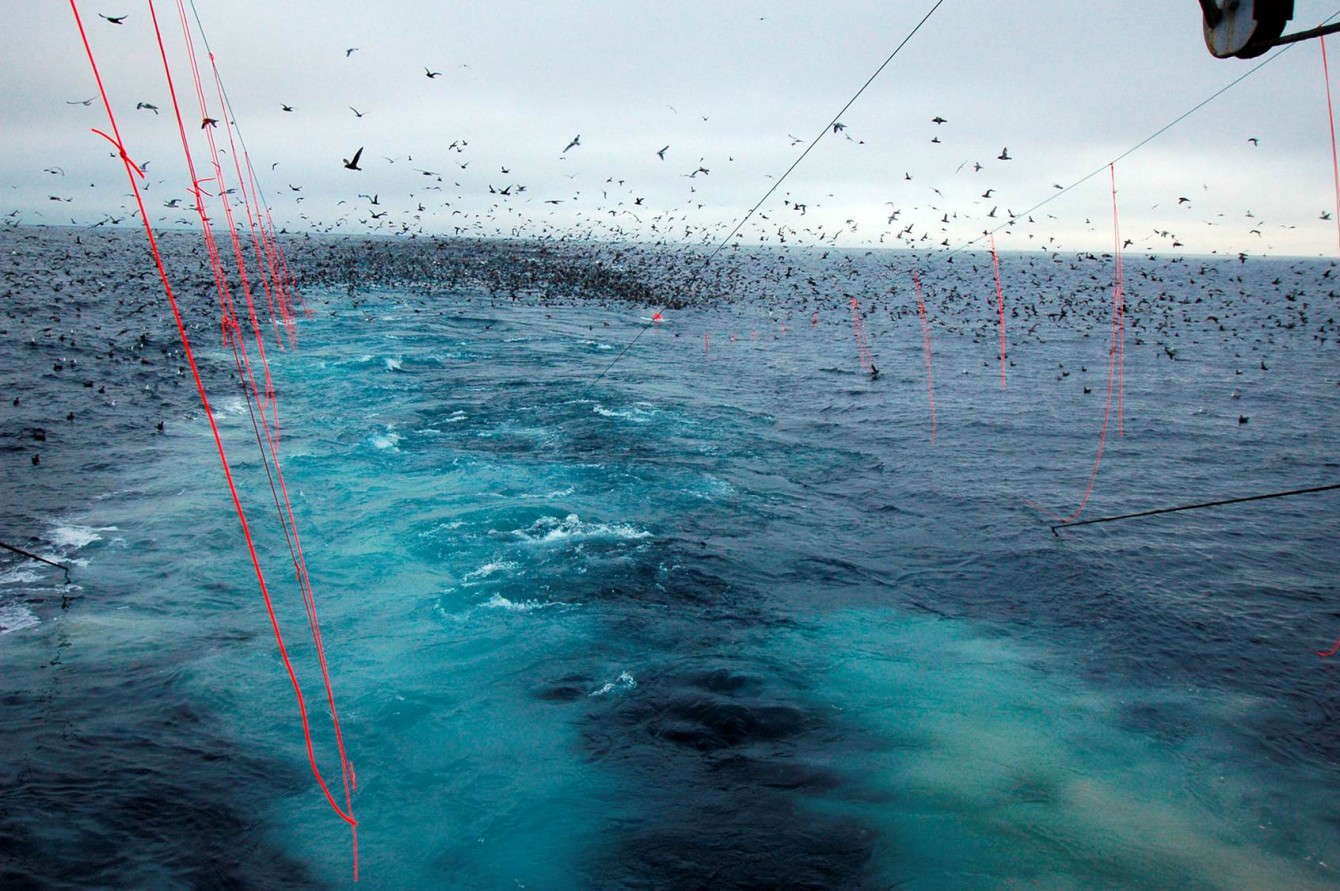 Bird-scaring lines in use on a fishing vessel; photograph by Ed Melvin. ACAP's Best Practice Advice encourages the implementation of bird-scaring lines in conjuction with extra mitigation measures such as weighted lines and night-setting to reduce seabird bycatch
Bird-scaring lines in use on a fishing vessel; photograph by Ed Melvin. ACAP's Best Practice Advice encourages the implementation of bird-scaring lines in conjuction with extra mitigation measures such as weighted lines and night-setting to reduce seabird bycatch
Stefan Meyer and Rachel Hickcox (Proteus) have produced a final report for the New Zealand Department of Conservation’s Conservation Services Programme (CSP) on bait loss caused by seabirds in New Zealand’s commercial longline fisheries.
The report’s summary follows:
“This project comprised a review of existing literature for methods to estimate bait loss caused by seabirds in New Zealand’s commercial surface longline (SLL) fisheries and to model economic impact of bait loss, in addition to an assesment of whether data exists that could be used to estimate bait loss and economic impacts for the fisheries.
The methods ranged from observations of successful bait taking attempts, observations of secondary attacks on bait stealing seabirds (a conservative measure of successful bait taking attempts, since primary attacks are not always successful), or immediate retrieval of lines after setting to reduce other factors contributing to bait loss other than seabirds (e.g., predatory fish, disintegration, physical stresses from wave action, longline deployment and retrieval). However, depending on how bait loss is determined or defined, estimates can range by orders of magnitude. Moreover, visual determination of seabird depredation of bait leads to results with limited applicability to actual fishery operation (e.g., daylight observations are required, but most SLL fishing in New Zealand occurs during night).
As per legal requirements, SLL fishing vessels use some combination of seabird bycatch mitigation (e.g., using a combination of tori lines for the duration of all setting events, weighting lines, setting lines at night, or alternatively hookpod devices can be used as the sole bycatch mitigation method). Implementing a case-control study is recommended, to assess how different bycatch mitigation strategies affect bait loss. To ensure that bait loss due to seabird depredation is assessed, fishing practices need to be held constant between vessels with different bycatch mitigation measures. Alternatively, vessels with different fishing practices could alternate bycatch mitigation measures (e.g., switching bycatch mitigation measures half-way through the season) such that all assessed vessels were operating under different bycatch mitigation strategies.
To model economic consequences, collecting data on direct revenue for catch and costs of bycatch mitigation measures and other operational costs is recommended, because the scope of such work would be to incentivize fishers for the use of specific bycatch mitigation measures. Within New Zealand, commercial fishers can only sell fish to licensed fish receivers, and data on fish sold and prices for fish at the time of selling might be available through seafood industry owned databases. Alternatively, revenue and costs could be directly collected as part of a study dedicated to assessing bait loss.”
Reference:
Meyer, S., Hickcox, R. 2023. Bait retention as a driver to mitigation use in the surface longline fishery.MIT2022-04 final report prepared by Proteus for Conservation Services Programme, Department of Conservation. 50 pp.
12 June 2023

 English
English  Français
Français  Español
Español